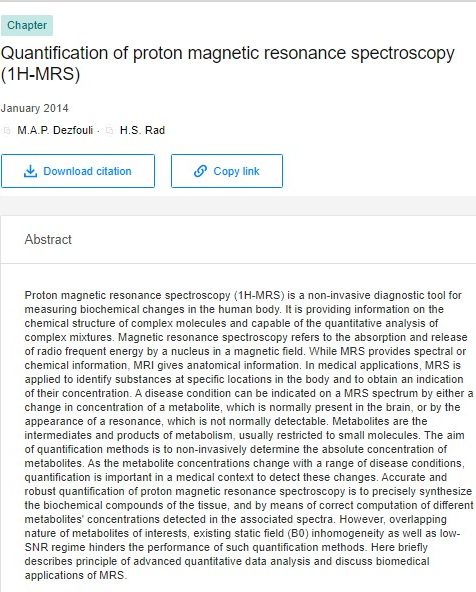Quantification of Proton Magnetic Resonance Spectroscopy (1H-MRS)”, In Current Applications of Chemometrics
Abstract
Proton magnetic resonance spectroscopy (1H-MRS) is a non-invasive diagnostic tool for measuring biochemical changes in the human body. It is providing information on the chemical structure of complex molecules and capable of the quantitative analysis of complex mixtures. Magnetic resonance spectroscopy refers to the absorption and release of radio frequent energy by a nucleus in a magnetic field. While MRS provides spectral or chemical information, MRI gives anatomical information. In medical applications, MRS is applied to identify substances at specific locations in the body and to obtain an indication of their concentration. A disease condition can be indicated on a MRS spectrum by either a change in concentration of a metabolite, which is normally present in the brain, or by the appearance of a resonance, which is not normally detectable. Metabolites are the intermediates and products of metabolism, usually restricted to small molecules. The aim of quantification methods is to non-invasively determine the absolute concentration of metabolites. As the metabolite concentrations change with a range of disease conditions, quantification is important in a medical context to detect these changes. Accurate and robust quantification of proton magnetic resonance spectroscopy is to precisely synthesize the biochemical compounds of the tissue, and by means of correct computation of different metabolites’ concentrations detected in the associated spectra. However, overlapping nature of metabolites of interests, existing static field (B0) inhomogeneity as well as low-SNR regime hinders the performance of such quantification methods. Here briefly describes principle of advanced quantitative data analysis and discuss biomedical applications of MRS.

